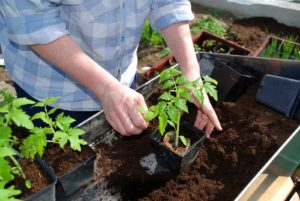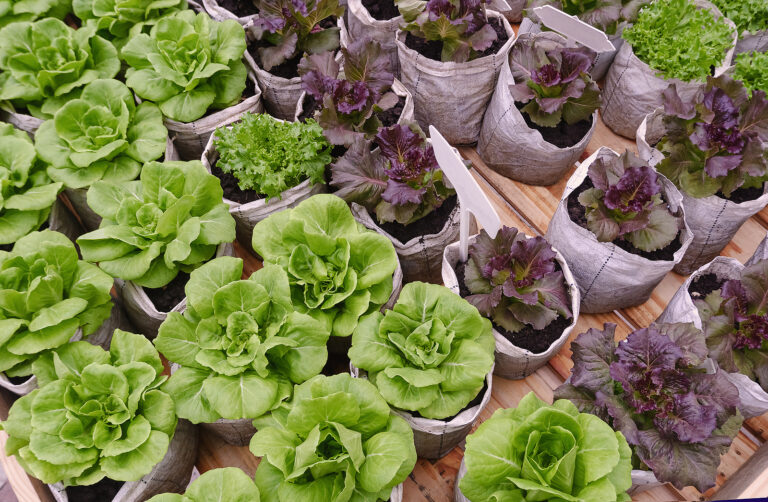Potting Mix Ingredients
A potting mix is a combination of organic particles and pores or spaces that hold air and water. Organic matter or soil holds nutrients.
Air and water in a potting mix are necessary for roots and beneficial micro-organisms in the soil to grow and survive.
Plants need air around their roots for nutrients to pass from the soil through soil water to the roots. Nutrients are drawn up into a plant with the water that is taken up by the roots.
Small spaces in the soil are called micropores; they contain mostly water. Large spaces in soil are called macropores; they contain mostly air.
When a potting mix or soil is compacted or when there is too much water in the soil, roots can not draw nutrients into the plant.
The spaces in a good potting mix should be filled half by water and half by air. The organic matter in a potting mix should be rich in nutrients.
Potting mix is a lightweight alternative to garden soil. Commercially blended potting mixes are pasteurized and free of weed seeds, pest nematodes (small microscopic worms), and fungus spores that can cause disease.
Contents of commercial potting mixes
What are the ingredients in a potting mix–also called potting soil, starting mix, or transplanting mix–and what do they do? Here’s a guide:
Vermiculite
Vermiculite is a form of mica rock that has been rapidly heated to about 2,000°F (1,093°C). Moisture trapped in the mineral turns to steam and pops the gray-brown rock into small spongy fragments. Vermiculite can absorb several times its weight in water and nutrients. It helps keep a container moist and contains magnesium, potassium, and calcium–elements needed for healthy plant growth. Vermiculite has a neutral pH.
Perlite
Perlite is made from whitish volcanic rock. It is rapidly heated to 1,800°F (982°C) and pops into small kernels. Perlite holds moisture on its surface but does not absorb it. It is added to potting mixes to create minute pockets between soil particles allowing oxygen to enter the mix. Oxygen is necessary for plant root survival. Perlite adds no nutrients to the mix and has a neutral pH.
Peat moss
Peat moss is a bog plant harvested primarily in Canada. Peat moss is a very slowly renewable resource coming from peat bogs formed over hundreds of years. Peat moss holds several times its weight in water and also holds air. It is slow to decay and adds little in the way of nutrients. Peat moss as a pH of 3.5-4.5.
Limestone
Limestone (either dolomitic or calcitic) is a source of calcium added to potting mixes to counter the acidity of peat moss. Dolomitic limestone contains magnesium in addition to calcium.
Coco peat or coir
Coco peat or coir is a recycled coconut husk that holds several times its weight water—more than peat moss–and also holds air. Coco peat is used in potting mixes as an alternative to peat moss. It has a pH of 5.7-6.8. Coir comes in compressed bricks that must be soaked in warm water before they are used.
Ground fir
Ground fir or pine bark and composted redwood sawdust are ground wood particles add texture and body to a potting mix and provide anchorage for roots. Wood particles contain some nutrients.
Nutrients from fertilizer
A complete, all-purpose fertilizer is sometimes added to potting mixes. A complete fertilizer contains each of the three major plant nutrients, nitrogen, phosphorus, and potassium (abbreviated NPK). A common all-purpose fertilizer would contain 10 percent nitrogen, 10 percent phosphorus, and 10 percent potassium (the remainder of the blend is an inert substance); this fertilizer would be referred to as 10-10-10.
Related articles:
Container and Pots Sizes: How Much Soil Do I Need?
Pot and Container Sizes for Growing Vegetables
Container Vegetable Gardening Guide
Garden Planning Books at Amazon:
- Vegetable Garden Almanac & Planner
- Kitchen Garden Grower’s Guide Vegetable Encyclopedia
- Vegetable Garden Grower’s Guide
- Tomato Grower’s Answer Book



